Foreword
With the Legislative Decree no. 209 of 28 December 2023, the Italian inbound workers regime has changed once again.
The amendments to the regime have the effect of rendering the regime less favourable by both reducing the exemption and providing for more stringent criteria.
Previous foreign tax residence requirement
One of the main differences with the previous regime is related to the more stringent subjective scope.
Indeed, the previous regime could have been enjoyed by any individual who had been tax resident outside of Italy for at least two fiscal years.
On the contrary, the new regime requires that the inbound workers had to be tax resident abroad for at least 3 fiscal years. Higher thresholds are provided where the worker that transfers his/her tax residence to Italy keeps working for the same employer he/she was working for when resident abroad.
In particular, if the worker carries out his/her activity in favour of the same person (or an entity part to the same group) he/she was working for before moving to Italy, his/her previous stay outside of Italy needs to be equal to six years at least.
The threshold goes up to seven fiscal years if the worker was previously employed in Italy by such employer.
This is a new requirement as it was not present in the previous regime. Nonetheless the aim is clearly to avoid granting the benefit of the regime to workers that moved to Italy (or moved away from Italy and then came back) without actually changing job in order to avoid companies or group to allow their workers to move Country only to benefit from a more favourable tax regime.
Commitment to stay in Italy
Another requirement for the new regime to apply is that the inbound worker has to commit to remain tax resident in Italy for at least four fiscal years. This threshold has been doubled as the previous regime only provided for a two-year commitment.
If the relevant worker moves out of Italy before the fourth year, then the regime ceases to apply retroactively and the Italian Tax Authorities shall claim back all the benefits that the worker has received plus interest. No penalties are provided for by the law in this case.
Income exemption and threshold
The old inbound workers regime provided for a 70% income exemption which might be raised to 90% if certain conditions were met (i.e. where the tax residence was moved to the southern part of Italy).
The new inbound workers regime, instead, provides for a 50% income exemption rate which might be elevated to 60% where the taxpayer moving his/her residence to Italy has underaged dependent child.
Another substantial difference between the old and new inbound workers regime lies in its income threshold.
The old regime did not provide for any maximum threshold, meaning that the exemption ratio could have been applied to any amount of income. On the contrary, the new regime also provides for an income threshold of 600,000 Euros per fiscal year. When the income derived is higher than such threshold, the exemption does not apply.
Finally, the previous regime applied with respect to employment income, income assimilated to employment income (e.g. directors’ fees) and certain kind of self-employment income (i.e. income derived by arts and professions). The old regime, on the contrary, was applicable to a broader range of kind on income, including business income and all the kind of self-employment income.
Requirements related to the activity of the worker
The previous and the new regime overlap when it comes to the location where the activity may be carried out. Indeed, in both the regimes it is necessary that the work activity is performed in Italy for the greater part of the fiscal year.
However, differently from the previous regime, the new inbound workers regime provides for a limitation with respect to kind of workers which are eligible for it. The new regime can only be enjoyed by certain highly qualified professional.
Specific education titles or qualifications
One of the new requirements provided for by the amended rule is that only workers respecting certain education criteria are allowed to benefit from the regime.
Indeed, the new inbound workers regime only applies to workers that are highly specialized or qualified. In more details, to benefit from the exemption the workers must either:
- have obtained a degree with a minimum of three-year course; or
- perform certain specific high qualified activities (e.g. entrepreneurs, directors, workers in scientific fields, lawyers, doctors, engineers and similar).
Grandfathering rule
The new regime applies for the workers transferring their tax residence in Italy as off fiscal year 2024.
A grandfathering rule applies for workers that have arrived in Italy in the second part of fiscal year 2023. These workers will become fiscally resident in Italy as of fiscal year 2024, hence the new regime should in principle apply to them. However, in order to avoid such workers to be subject to a stricter regime even if they arrived to Italy when the old regime was still in place, the old regime still applies for workers that have arrived to Italy in the second part of fiscal year 2023 even if they will become Italian tax resident as of 2024.
| COMPARISON BETWEEN OLD AND NEW INBOUND WORKERS REGIME | ||
| Old regime | New regime | |
| Previous tax residence abroad |
· 2 fiscal years. | · 3 fiscal years;
· 6 fiscal years if the workers arrive in Italy while working for the same employer; · 7 fiscal years if the workers arrive in Italy while working for the same employer and it was previously working in Italy for that employer. |
| Commitment to stay in Italy |
· 2 fiscal years. | · 4 financial years. |
| Exemption amount | · 70%;
· 90% if the residence was acquired in the south of Italy. |
· 50%;
· 60% if the worker has an underaged child. |
| Eligible amount of income | · No limit. | · Maximum 600,000 Euros |
| Eligible type of income |
· Employment income and assimilated;
· self-employment income; · business income. |
· Employment income and assimilated
· self-employment income but only derived with respect to art and professions. |
| Duration of the regime |
· 5 years, which could have extended for another 5 years where certain conditions were met. | · 5 years, which could have extended for another 3 years where certain conditions are met. |
| Special education or qualification | · Not required. | · Only certain kind of workers may benefit from the regime (workers that have obtained certain degrees or highly qualified workers). |




